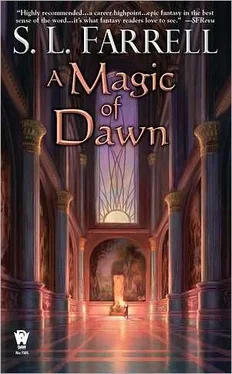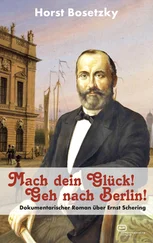S Farrell - A Magic of Dawn
Здесь есть возможность читать онлайн «S Farrell - A Magic of Dawn» весь текст электронной книги совершенно бесплатно (целиком полную версию без сокращений). В некоторых случаях можно слушать аудио, скачать через торрент в формате fb2 и присутствует краткое содержание. Жанр: Фэнтези, на английском языке. Описание произведения, (предисловие) а так же отзывы посетителей доступны на портале библиотеки ЛибКат.
- Название:A Magic of Dawn
- Автор:
- Жанр:
- Год:неизвестен
- ISBN:нет данных
- Рейтинг книги:4 / 5. Голосов: 1
-
Избранное:Добавить в избранное
- Отзывы:
-
Ваша оценка:
- 80
- 1
- 2
- 3
- 4
- 5
A Magic of Dawn: краткое содержание, описание и аннотация
Предлагаем к чтению аннотацию, описание, краткое содержание или предисловие (зависит от того, что написал сам автор книги «A Magic of Dawn»). Если вы не нашли необходимую информацию о книге — напишите в комментариях, мы постараемся отыскать её.
A Magic of Dawn — читать онлайн бесплатно полную книгу (весь текст) целиком
Ниже представлен текст книги, разбитый по страницам. Система сохранения места последней прочитанной страницы, позволяет с удобством читать онлайн бесплатно книгу «A Magic of Dawn», без необходимости каждый раз заново искать на чём Вы остановились. Поставьте закладку, и сможете в любой момент перейти на страницу, на которой закончили чтение.
Интервал:
Закладка:
SNIPPETS FROM THE “NESSANTICO CONCORDIA”
(4th Edition, Year 642)
Family Names in the Holdings:
Within Nessantico, lineage follows the matrilineal line. A husband might, in rare cases, retain his own family name (especially if it were considered higher in status than his wife’s), but the wife can never take his name. In the vast majority of cases, however, the husband will legally take on his wife’s family name, thus becoming a member of that family in the eyes of Nessantico law-the husband will continue to bear that name and be considered to be part of that family even upon the death of his spouse, unless and until he remarries and thus acquires his new wife’s name. (Divorces and annulments are rare in Nessantico, requiring the signature of the Archigos, and each divorce is a special situation where the rules are sometimes fluid.) Children are, without exception, given the mother’s family name: “One always is certain of the mother,” as the saying goes in Nessantico.
The prefix to a family name can change, depending on the relative status of the immediate family within Nessantico society. The prefixes, in order of rising status, are: • none • ce’ (keh) • ci’ (kee) • cu’ (koo) • ca’ (kah).
One of the functionary roles of the Kralji was to sign the official family rolls every three years wherein the prefixes are recorded, though the Kraljiki or Kraljica rarely determined any changes personally; that was the role of the bureaucracy within Nessantico known as the Gardes a’Liste.
Thus, it is possible that the husband or wife of the ci’Smith family might gain status in some manner and be awarded a new prefix by the Gardes a’Liste. Husband, wife, their children and any surviving maternal parents thus become cu’Smith, but brothers, sisters, and any cousins would remain ci’Smith.
Royalty Succession Within The Holdings:
Various countries within the Holdings, not surprisingly given the variance of customs, have various rules of succession within their societies. This is especially true when those countries are independently ruled. For instance, in East Magyaria, the closest male relative of the previous ruler who is also not a direct child of that ruler is named as the successor. However, with the ascension of Nessantico and the Holdings, those countries within Nessantico’s influence tend to follow the lead of the Kralji.
For the royal families of Nessantico, title succession is normally to the Kralji’s children by birth order regardless of gender. However, it is possible for the Kralji to legally designate a favorite child as the heir and bypass earlierborn children, if the Kralji deems them unfit to rule or if for some reason they fall out of favor. This is an uncommon occurrence, though hardly rare throughout history. For the Kralji, it means that his or her children will tend to curry favor so as to remain in good graces or perhaps to unseat one of their brothers or sisters from being named the a’Kralj.
The Ilmodo and Spellcasting:
Some people have the ability to sense the power that exists all around us: the invisible potent energy of the Second World that surrounds us. In the Nessantico-controlled regions of the world, usage of magic has always been linked to religious faith, all the way back into prehistory. The myth of Cenzi extends deep into the historical mist, and it is the followers of Cenzi who have always possessed the power to manipulate the Ilmodo through chants and hand-motions.
The chanting that binds the power of the Ilmodo is the “Ilmodo language” that all acolyte teni are taught. The Ilmodo language actually has its linguistic roots in the speech of the Westlands, though neither those of the Concenzia Faith nor the Numetodo realized that for centuries. Those of the Westlands also take power from the Second World via the instrument of religion, though through a different god and mythology, and they have their own name for the Ilmodo: X’in Ka
The Numetodo have taken the most recent path to this power: not through faith at all, but essentially by making a “science” of magic. The cult of the Numetodo first arose in the late 400s, originally from the Isle of Paeti, and spread mostly west and south from there, sometimes reacting violently with the culture of Nessantico and the Concenzia Faith.
However the power is gained, there is a necessary “payment” for spell use: using spells costs the wielder physically; the greater the effect, the higher the cost in exhaustion and weariness for the caster.
Different paths have resulted in different abilities-for Concenzian teni, there is no “storage” of spells-their spells take time to cast and once prepared, they must be cast or they are lost. However, the teni of the Faith have the advantage of being able to cast spells that linger for some time after the casting (see “The Lights of Nessantico” or “The Sun Throne of the Kralji”). Teni who cast spells quickly and effectively are unusual, and have in historical times been suspected of heresy.
The Numetodo, in contrast, have found a way to cast their spells several turns of the glass earlier (though such spells can’t be stored indefinitely). Like all users of this power, they “pay” for it with exhaustion but hold the power with their minds to be released with a single gesture and word. Their spells are generally longer and more arduous to create (even more so than that of the teni), but do not require “faith”-as is required by both the path of Concenzia and the Westlanders. All they require is that the spellcaster follows a “formula.” However, any variation from the formula, even small, will generally ruin the spell.
The Westlanders, following what they call X’in Ka, must perform the chants and hand gestures much like the teni, but they can also “enchant” an object with a spell (something neither teni nor Numetodo can do), so that the object (e.g.: a walking stick) manipulated in a particular way (e.g. striking someone) can release a spell (e.g. a shocking jolt that renders the struck person unconscious).
In all cases and whatever the path of the spellcaster, the spells of the Second World tend to be linked to elementals in our world: fire, earth, air, and water. Most spellcasters have an ability sharply stronger in one element and much weaker in the others. Rarely does a spellcaster have the ability to handle two or more elements with any skill; even more rare are those who can move easily between any of the elements.
The Ranks of Teni in the Concenzia Faith:
The teni are ranked in the following order, from lowest to highest:
Acolyte -those who are receiving instruction to become one of the teni-generally, the instructions requires tuition be paid to Concenzia by the students’ families. The Concenzia Faith brings in both male and female students to become teni, though realistically the classes tend to be largely male, and there are fewer women than men represented in the higher ranks of the teni. (There have been only six female Archigi in the long history of the Faith.) During the acolyte period (typically three years), the students serve within the Faith, doing menial tasks for the teni, and also begin to learn the chants and mental discipline necessary for Ilmodo, the manipulation of the universe-energy. Typically, only about 10% of the acolytes receive the Marque of the Teni. There are schools for acolytes in all the major cities of Nessantico, each presided over by the a’Teni of the region.
E’Teni -the lowest teni rank for those brought into the service of the Faith. The acolytes who receive their Marque are, with exceedingly few exceptions, awarded this rank, which denotes that they have some small skill with Ilmodo. At this point, they are generally tasked with menial labor that requires the magic of Cenzi, such as lighting the city lamps, and are expected to increase their skill and demonstrate their continuing mastery of the Ilmodo.
Читать дальшеИнтервал:
Закладка:
Похожие книги на «A Magic of Dawn»
Представляем Вашему вниманию похожие книги на «A Magic of Dawn» списком для выбора. Мы отобрали схожую по названию и смыслу литературу в надежде предоставить читателям больше вариантов отыскать новые, интересные, ещё непрочитанные произведения.
Обсуждение, отзывы о книге «A Magic of Dawn» и просто собственные мнения читателей. Оставьте ваши комментарии, напишите, что Вы думаете о произведении, его смысле или главных героях. Укажите что конкретно понравилось, а что нет, и почему Вы так считаете.












